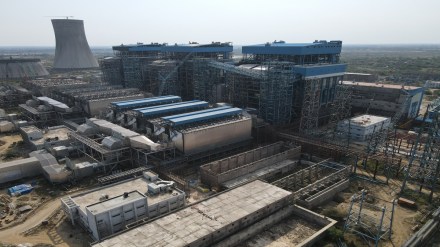Thermal power plants are being widely used as one of the best options for producing electricity in the world. However, due to the rising pollution globally, the use of renewable energy is increasing rapidly. In this context, the use of supercritical technology is being followed in thermal power plants to reduce the fuel consumption and to meet the environmental friendly goal.
Speaking to FinancialExpress.com, Santosh CS, Chief Executive Officer (CEO), Neyveli Uttar Pradesh Power Ltd (NUPPL) said, “There is a lot of thrust for increasing the Renewable energy capacity addition. This is mainly dependent on weather conditions and is cyclic in nature. Thus, to meet the rising demand of power in the country, the addition of thermal capacity is significant.”
What is a Supercritical thermal power plant?
The Supercritical thermal power plant refers mainly to the steam operating conditions being above the critical pressure and critical temperature of water. These power plants are environmentally friendly to some extent and help in lower carbon footprint in the atmosphere. The supercritical power plants have lots of benefits such as: less fuel consumption, less emission of gases, higher efficiency, etc.
Know how NUPPL’s thermal power plant’s Supercritical boilers would work:-
Situated at Uttar Pradesh’s Ghatampur tehsil, the NUPPL thermal power plant is set to be fully operational by the end of FY 2023-24. This is NLC India Limited’s first coal-based supercritical thermal power plant in the country.
The power plant has a capacity of 1980 MW and it will supply electricity to Uttar Pradesh (75.12 per cent) and Assam (24.88 per cent). The Supercritical boilers in thermal power plants operate under a unique set of conditions. These are:
- Supercritical state: The boiler operates at a pressure and temperature above the critical point of water (critical pressure is around 22.1 MPa and critical temperature is around 374°C). In this state, water and steam exist as a single phase without distinct liquid and gas phases.
- Water and steam cycle: Water is pumped into the boiler, where it is heated and pressurized above its critical point. The water transforms into a supercritical fluid, which is neither liquid nor gas but exhibits properties of both. It possesses high density, high thermal capacity, and excellent heat transfer characteristics.
- Combustion: Fuel, such as coal, is burned in the boiler’s combustion chamber, releasing energy in the form of heat. The heat is transferred to the supercritical fluid, raising its temperature and pressure.
- Supercritical steam generation: The supercritical fluid flows into the turbine, where it passes through a series of stages. The expanding fluid drives the turbine blades, converting the heat energy into mechanical energy.
- Power generation: The rotating turbine is connected to a generator, which converts the mechanical energy into electrical energy.
- Reheating and regeneration: To increase overall efficiency, some supercritical boilers employ reheating and regeneration. Reheating involves passing the steam through additional heating stages, while regeneration utilizes feedwater heaters to extract heat from the turbine exhaust and preheat the incoming water.
- Condensation: After passing through the turbine, the steam is condensed back into water in a condenser. This process releases the latent heat of vaporization, which can be reused in the boiler cycle.
- Feedwater cycle: The condensed water is then pumped back into the boiler to restart the cycle, completing the feedwater cycle.
Advantages of Supercritical boilers:-
- Higher efficiency: Operating at higher temperatures and pressures allows for increased efficiency in converting thermal energy into electricity.
- Reduced emissions: Supercritical boilers can achieve better combustion and reduced emissions of greenhouse gases compared to subcritical boilers.
- Compact design: Supercritical boilers tend to have a more compact design, requiring less space compared to subcritical boilers.
